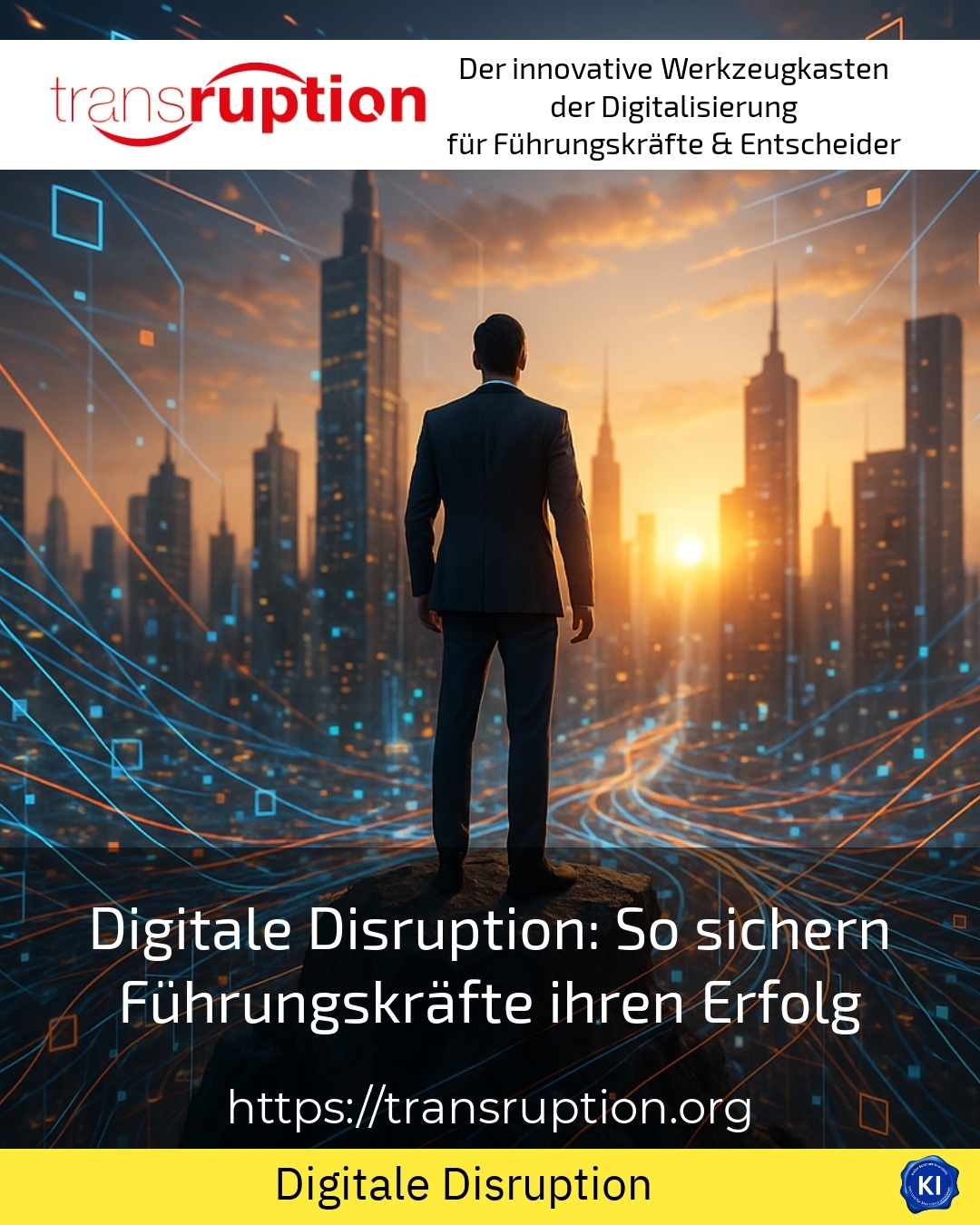Digital disruption is fundamentally shaping many industries today. More and more managers are realising that traditional strategies are losing flexibility and new digital technologies are profoundly changing their business. The ability to understand and actively manage these changes is crucial in order to remain competitive.
Recognising and strategically managing digital disruption
Digital disruption means the radical transformation of markets and business models through innovative technologies. Examples include companies such as Amazon, which is revolutionising the retail sector, or Uber, which is reshaping the taxi industry. Similar effects can also be seen in many other industries:
- In the healthcare sector, the integration of artificial intelligence ensures faster diagnoses and better treatment methods.
- In the world of finance, FinTechs such as digital payment services or robo-advisors enable efficient and personalised services.
- The property sector is experiencing a new form of customer contact and transaction processing thanks to digital platforms for rental and purchase offers.
Managers must recognise these developments at an early stage and integrate them into their strategic planning in order to minimise disruptive risks and exploit opportunities.
Practical example of digital business models
BEST PRACTICE at the customer (name hidden due to NDA contract) An established industrial company was able to digitally expand its business models thanks to transruption coaching. It utilised analytics and AI to better understand customer needs and develop flexible, digital services. As a result, the company gained new market segments and significantly increased its competitiveness.
Change requires not only technological investment, but also a transformation of the corporate culture. Openness to new ideas, a culture of error and the courage to self-criticise support managers in accompanying disruption instead of being overrun by it.
Agility and a culture of innovation in response to digital disruption
Agile structures help managers to react quickly to market changes. Companies such as Spotify and Zalando have been demonstrating for years how agile teams and iterative processes accelerate innovation. This promotes adaptability in the dynamic environment of digital disruption.
Companies in the manufacturing industry are also increasingly turning to digitalisation to optimise production processes and make maintenance predictable using smart sensor technology. This increases efficiency and creates new data-based business models.
Establishing a culture of innovation often proves to be a challenge because internal structures and hierarchies have to be changed. At the same time, many clients report that it is precisely this cultural change that is an important factor for success in the digital age.
Practical example of promoting innovation within the Group
BEST PRACTICE at the customer (name hidden due to NDA contract) An international company introduced an in-house innovation lab with the support of transruptions coaching. Employees were able to quickly test and improve new digital prototypes there. This increased the frequency of innovation and provided managers with strategic support in their digital reorientation.
By combining agile methods, bold concepts and targeted leadership expertise, companies can actively and successfully shape the transformation.
Digital disruption: seizing opportunities through customer centricity
Customers are at the centre of digital disruption. New technologies enable personalised offers, and customer expectations and behaviour are constantly changing. Companies that understand their customers precisely and map their needs digitally will win in the long term.
There are examples of this in numerous sectors:
- Retailers that implement omnichannel strategies offer customers a seamless shopping experience between online and offline channels.
- Insurance companies use digital platforms to automate processes and quickly customise individual policies.
- Media providers retain users in the long term through personalised content recommendations and thus build up a loyal customer base.
Practical example of customer-centricity in the service sector
BEST PRACTICE at the customer (name hidden due to NDA contract) A service provider from the banking sector implemented a digital customer platform that integrates automated advisory tools and real-time feedback. This significantly improved service quality and helped managers to manage customer satisfaction in a more targeted manner.
In practice, the integration of customer feedback and a flexible customer approach requires continuous commitment and technical expertise - a challenge that managers are better able to master with suitable support.
My analysis
Digital disruption is a key challenge for managers today that goes far beyond technical innovations. It requires a comprehensive reassessment of business models, an agile corporate culture and consistent customer centricity. Companies that actively manage these aspects strengthen their competitive position and ensure their success in a rapidly changing world.
Transruption coaching can support managers in tackling digital disruption projects in a structured way, providing new impetus and finding individual ways to adapt. This results in sustainable strategies that not only focus on short-term solutions, but also support long-term corporate development.
Further links from the text above:
Digital disruption - definition, explanation and tips - nerdly
Digital disruption - Dr Dr Jörn Lengsfeld
Innolytics Digital Disruption
Digital disruption - IT-P
What is digital disruption? - Digitalisation coach
Digital disruption - Digitalisation - Glossary - Morgen-Beratung
Digital disruption - OMR Glossary
Digital disruption and megatrends - Maximum Digital
For more information and if you have any questions, please contact Contact us or read more blog posts on the topic TRANSRUPTION here.
















